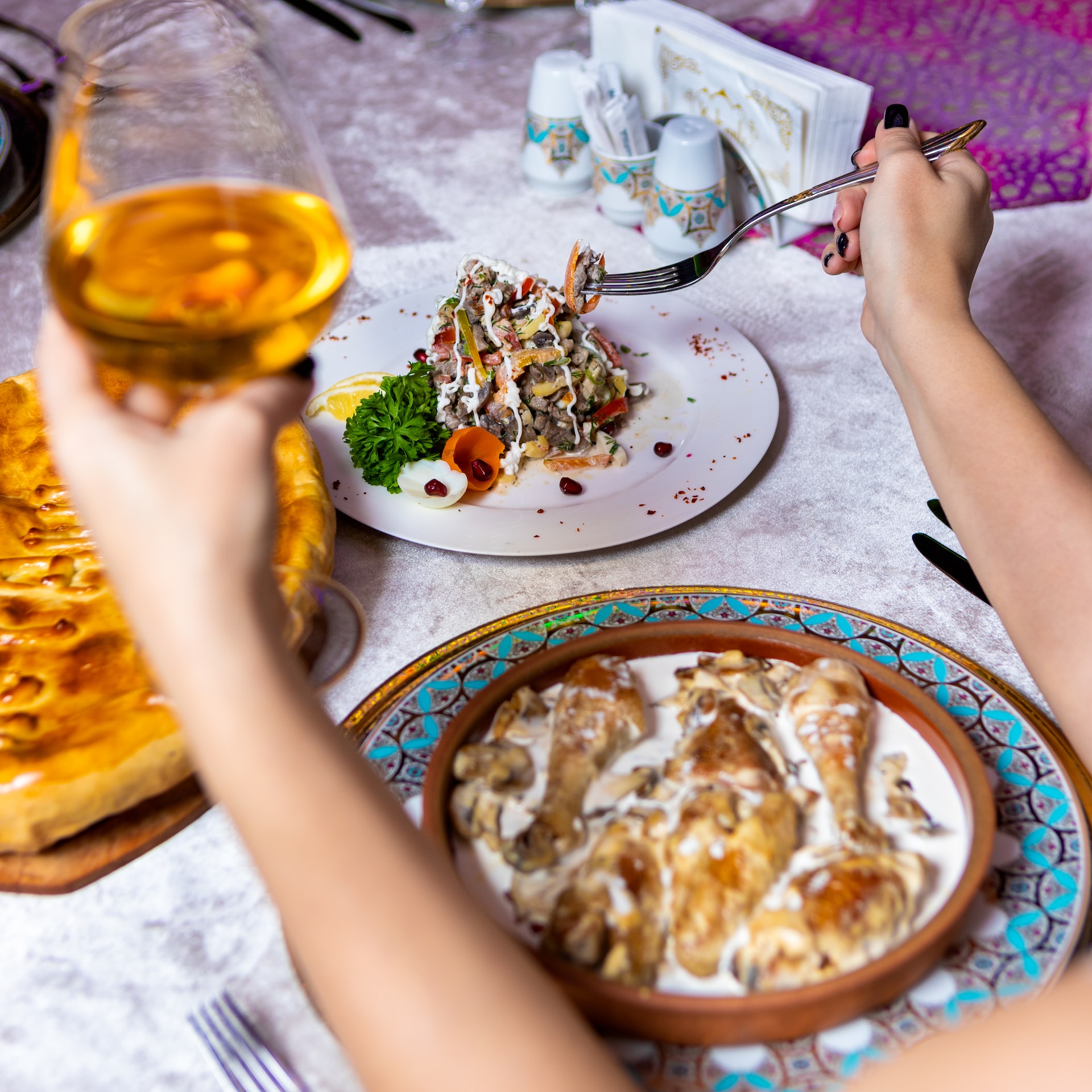Red wine, in moderation, has been found to have a myriad of benefits for the heart. Its potent quotient of antioxidants and polyphenols (like resveratrol) have been found to prevent coronary heart disease. Moderation is key when it comes to making the most of wine, and cooking can play a role in ensuring you consume a little resveratrol every day. There are a myriad of ways that you can introduce wine into your cooking.
Choose between red, white or rose wine, and you can also pick whether to use regular or alcohol-free wine, although cooking it does tend to burn off the alcohol content. So read on to discover some of the easiest and tastiest ways of incorporating wine into your cooking.
Table of Contents
What Wines Should You Use to Cook?
There are wines that are branded as ‘cooking wines’ and usually, they are located on store shelves next to products like salad dressings and sauces.
Give these wines a miss, as they are usually laden with salt and preservatives. Not only that but they don’t taste good so if you’re only using some in a recipe, you will end up with wine you can’t even drink because of the taste.
Instead, use a drinkable wine in recipes. Most recipes call for less than a cup (250ml) of wine, so there will still be enough left in the bottle for you to enjoy while cooking or alongside the meal.
Incorporating Wine into Your Cooking: Whites and Reds
If you are the type of gourmet who loves trying out new things, and you read reviews on different wine clubs regularly, a good tip is to balance flavor, affordability, and health. Aim for organic and biodynamic wines, which are made with organic grapes and which therefore contain higher quotients of antioxidants and resveratrol.
In terms of characteristics, for white wine, choose varieties with high acidity and citrusy notes. Avoid wine that has a high alcohol content (over 12.5%), oaky wines like Chardonnay (which can have a bitter taste), and expensive bottles which are supposed to be savored. Yes, definitely save the latter for sipping! For red wine, choose fruity wines that are light, dry and low in tannins. You can use heavier reds like Bordeaux for hearty winter stews or anything made with red meat or game meats such as venison, hare, bison, or boar.
Air Frying Steak with Wine
Over 25 million air fryers have been sold in the US over the past two years, with home cooks becoming increasingly savvy at creating delicious meals (including steak) with very little oil. To air-fry an affordable steak like flank steak,simply score the surface of your meat with a sharp knife, creating a criss-cross pattern.
Sprinkle both sides with salt and pepper, and place the stakes in a bowl with a marinade made of 1.5 cups (375ml) of red wine, fresh herbs like rosemary and thyme, 2 minced garlic cloves, and ⅓ cup (80ml) low-salt soy sauce. Marinade overnight.
Place the steak in your air fryer (previously heated to 400ºF or 200ºC), and cook the steak for 5 minutes on each side. Allow the meat to rest on a cutting board for around 5 minutes and serve with a red wine sauce or a little butter if you like.
Tomato Sauce with Wine
Some people on the East Coast make a type of tomato ‘gravy’ with their beef dishes. And this is another way of incorporating wine into your cooking. This gravy is easy to make! Just brown your seasoned meat in the pan with a little oil, add some wine and allow it to reduce. This step is crucial if you don’t want your sauce to taste too much like raw wine.
Next, add your tomato sauce and season as you would with a little salt and pepper or half a stock cube. I usually simmer mine for about 45 minutes over a medium heat (for a gentle simmer) and this helps smooth out the flavor.
Deglazing a Pan with Wine
Wine can be used to moisten or deglaze a pan to make a sauce. After sautéing your meat, remove it from the pan, Slowly add wine to the pan and start scraping any browned pieces that are ‘stuck’ the pan with a wooden spoon or silicon spatula.
Reduce the wine, adding fresh herbs like rosemary, and add a dab of butter. The sauce will top your seared meat perfectly. Give it a try – you’ll love how easy it is to make!
Braising Meat with Wine
Braising involves cooking meat in a pan to brown it, then allowing the meat to cook with liquid in a covered pot. You can braise your meat with a wide array of liquids, including stock or bouillon, though wine is ideal because of its acidity.
For this cooking method, choose fortified wines like sherry or port. These contain wine blended with a distilled spirit like brandy and the result is a fruity, nutty, rich liquid that adds a real wow factor to meat.
For an easy recipe, cube around 5 pounds (2.5 kg) of chuck roast (cut into bite-sized pieces). Brown the meat in the pan and set it aside. Add 3 minced garlic cloves, two chopped carrots, one cup (big handful) of your favorite mushrooms, and half a large yellow onion (chopped) to the pan.
Toss in a couple of bay leaves. Add a couple teaspoons of tomato paste/tomato concentrate, and sprinkle the vegetables with a little all-purpose flour. Doing so will help create a thicker gravy.
Finally, add around three cups (750ml – a whole bottle) of light red wine and a sprig of fresh rosemary. Place the meat back in the pan. Bring the dish to a boil, cover the pan, and cook for around three hours in a preheated oven (at 350ºF or 175ºC). Serve over white rice or mashed potatoes and freshly steamed vegetables.
Wine in Cooking: In Conclusion
As the famous saying goes, “I love to use wine in cooking – sometimes I even put it in the food!” this ingredient isn’t just great for sipping. It can add flavor, robustness and more depth to a multitude of recipes, both sweet and savory.
Wine is known for its wonderful flavor and plethora of health benefits, so why not include it in your cooking? There are many ways to do so, and most people would agree that wine adds a unique richness to sauces and stews. Wine is also used in a host of desserts, so do your research and surprise your family with one or more special dishes containing Bacchus’ delight.
Bottoms up!
Photos by Farhad Ibrahimzade on Unsplash


